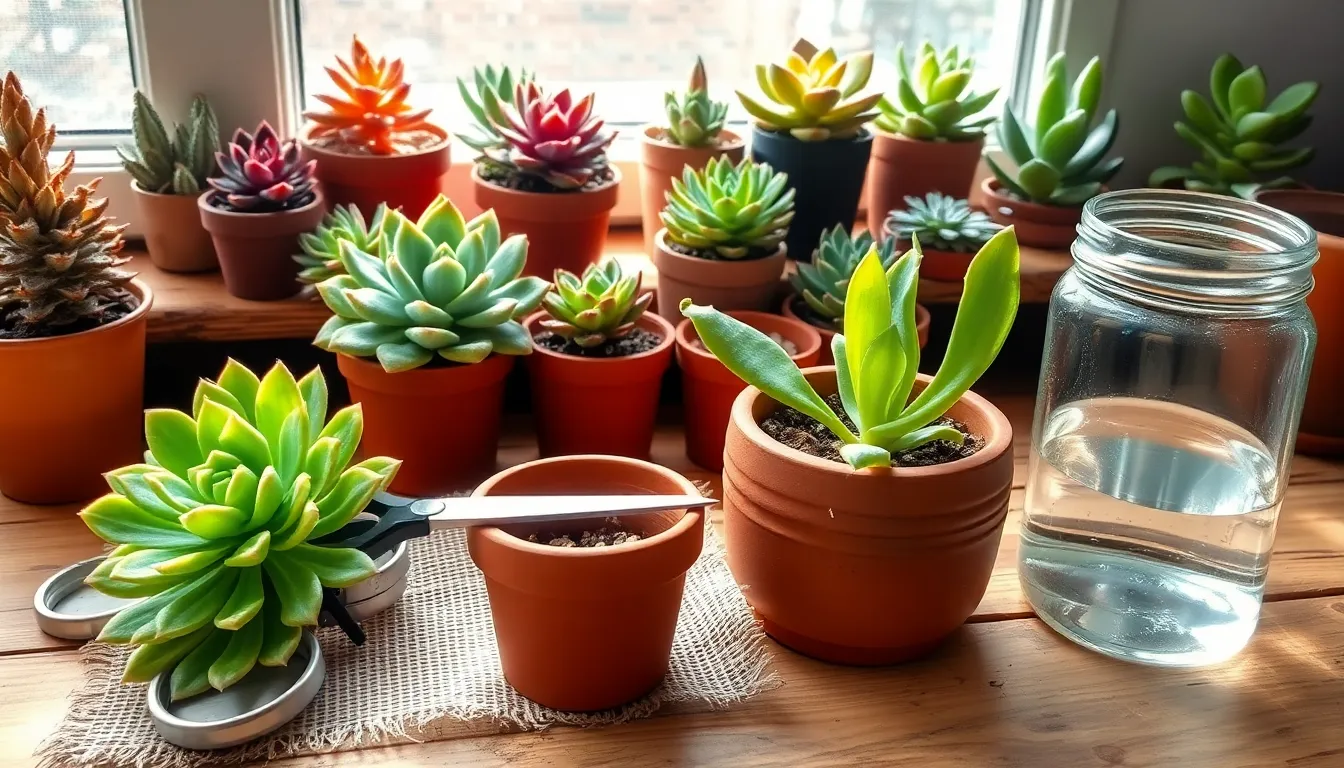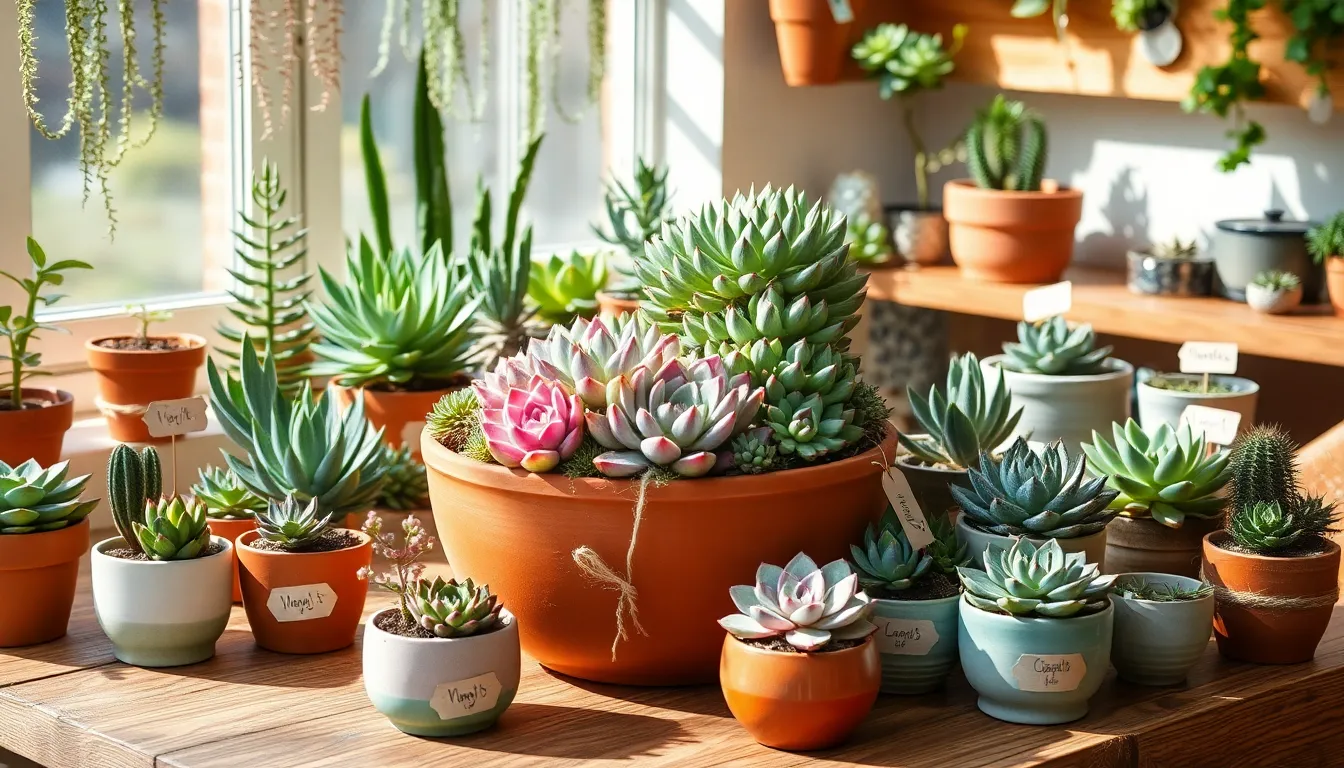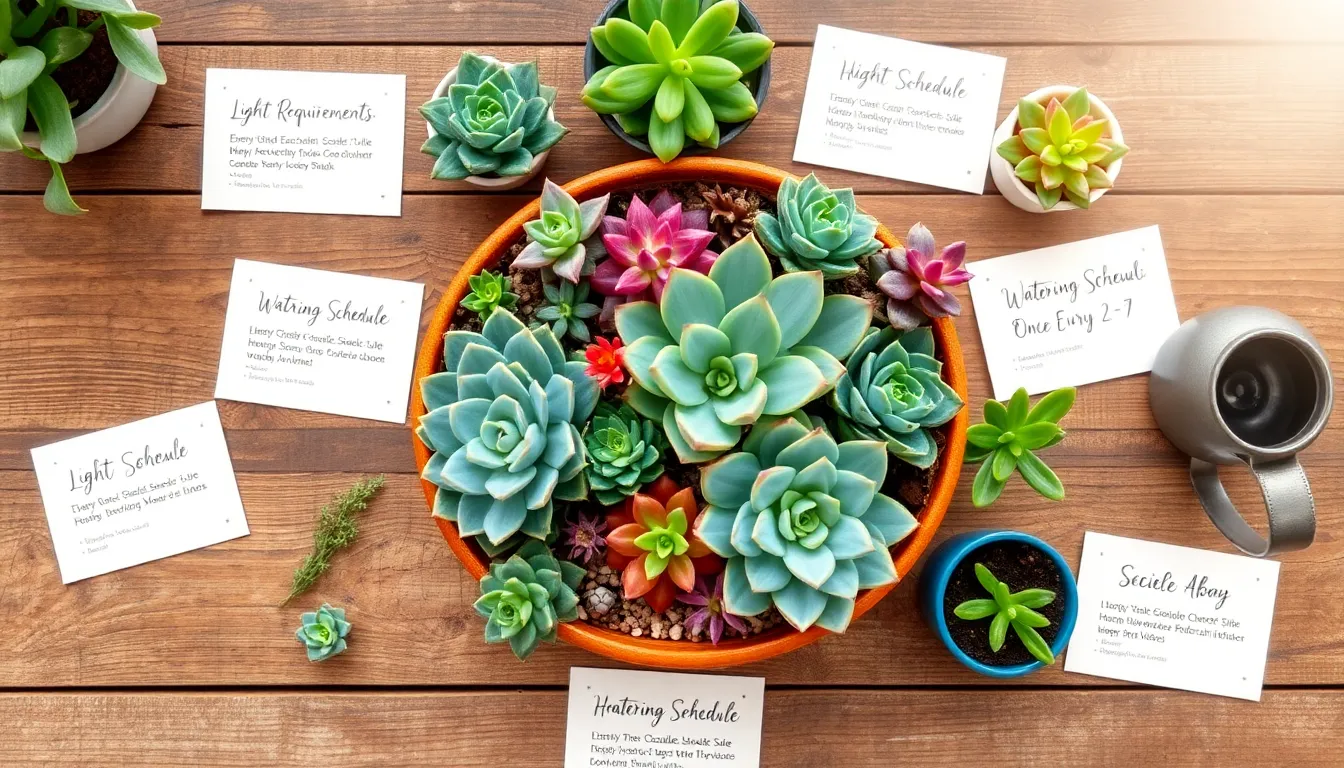Welcome to the wonderful world of succulents, where vibrant colors and intriguing shapes transform any space into a mini desert oasis! Whether you’re tending to your first pot of succulents or you’re a seasoned gardener looking to refine your skills, mastering the art of fertilizing these resilient plants can take your gardening game to new heights. Imagine the satisfaction of watching your succulents flourish, knowing they’re thriving because of the care and attention you’ve lavished upon them.
In “Essential Fertilizer Tips for Healthy Succulents,” we delve into the secrets of nurturing these fascinating plants to their full potential. This guide is a treasure trove for both newbies and experienced green thumbs, ensuring that everyone finds the information they need to cultivate robust, vibrant succulents. You’ll discover the practical benefits of using the right fertilizers, from enhancing growth and color to fortifying your plants against common issues.
Dive into this guide, and let it empower you with confidence and knowledge to create a stunning succulent collection. With the right techniques at your fingertips, you’ll experience the joy and rewards of successful gardening, transforming your succulents into the envy of all who behold them. Get ready to embrace the journey and watch your succulents thrive like never before!
Choose Low-Nitrogen Fertilizers
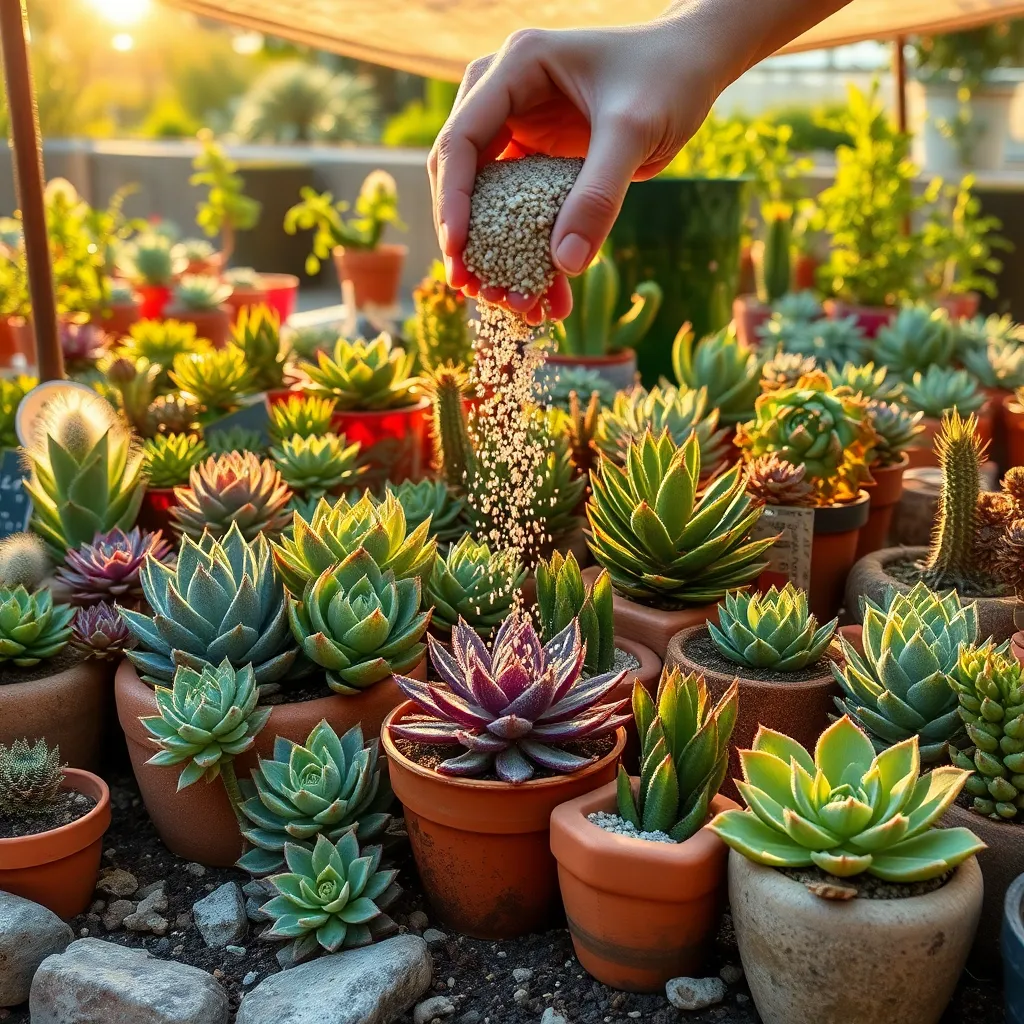
When selecting fertilizer for your succulents, it’s important to choose one that is low in nitrogen. Nitrogen-heavy fertilizers can cause succulents to grow too quickly, resulting in weak, leggy plants.
Instead, opt for a balanced fertilizer with a slightly higher ratio of phosphorus and potassium. These nutrients support strong root development and help maintain the compact, robust growth that succulents are known for.
Consider using an organic fertilizer, such as compost tea or worm castings, which provides a gentle nutrient boost without overwhelming your plants. These options are ideal for slow-release feeding and can improve soil health over time.
Apply your chosen fertilizer during the growing season, typically spring and summer, when succulents are most active. Limit feeding to once every four to six weeks to prevent over-fertilizing, which can lead to nutrient burn.
Dilute Fertilizer for Sensitivity
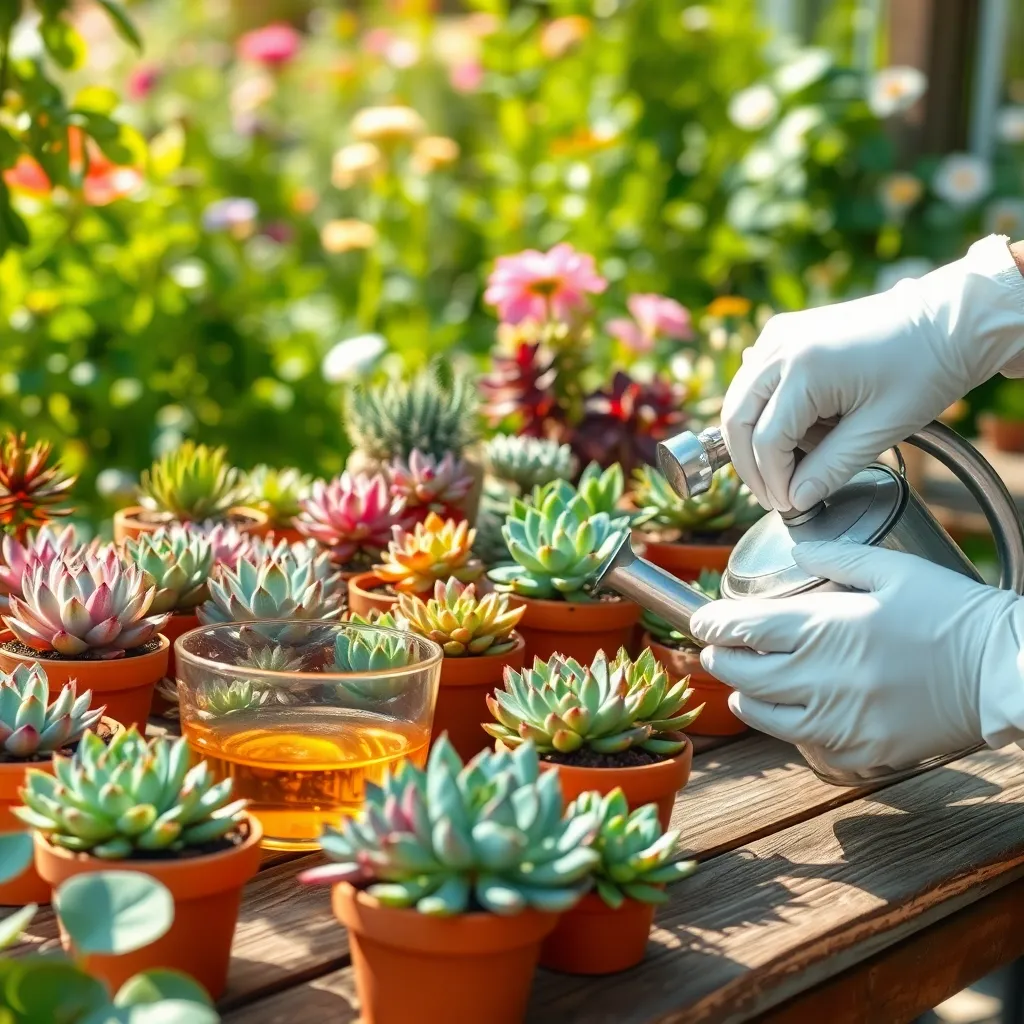
When fertilizing succulents, it’s crucial to remember that these plants are naturally adapted to nutrient-poor environments. To avoid overwhelming them, always dilute your fertilizer to half the recommended strength on the package instructions.
Begin by choosing a water-soluble, balanced fertilizer with a low nitrogen content. Mix it with water to achieve the right dilution, ensuring your succulents receive gentle nourishment without the risk of root burn.
It’s recommended to fertilize during the growing season, typically spring and summer, when succulents are actively growing. Apply the diluted solution every 4-6 weeks, providing consistent nutrients to support healthy growth.
For an advanced tip, consider using rainwater or distilled water when diluting your fertilizer to avoid introducing minerals that might accumulate in the soil. This practice can be particularly beneficial for sensitive succulents or those grown indoors where water quality might vary.
Apply in Active Growth Periods
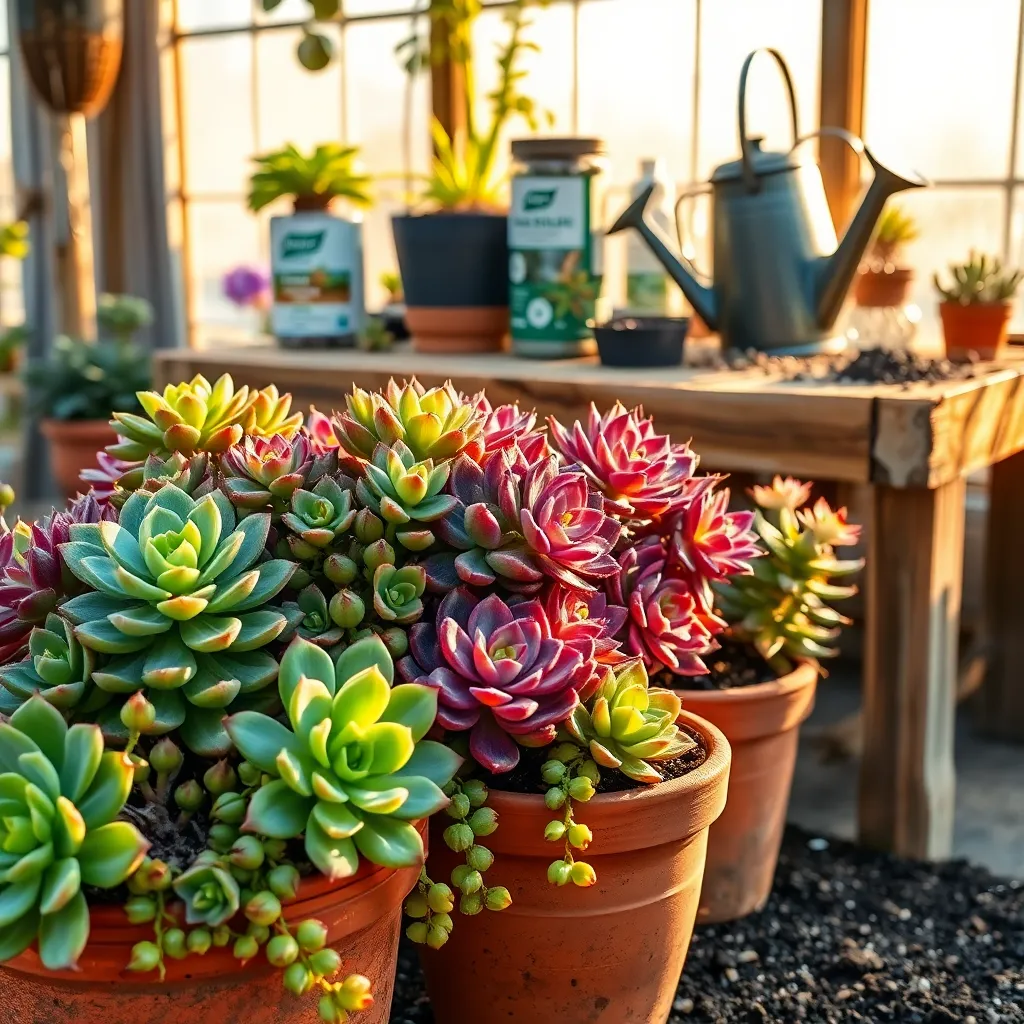
To achieve optimal growth in your succulents, it’s essential to apply fertilizer during their active growth periods, typically in the spring and summer. During these times, succulents are naturally primed to absorb nutrients more effectively, promoting robust development and vibrant foliage.
Begin by observing your succulent’s growth cycle to pinpoint when they start showing signs of new growth. This is the ideal moment to introduce a diluted, balanced fertilizer, which should be applied every four to six weeks throughout the growing season.
It’s important to choose a fertilizer specifically formulated for succulents, such as a 10-10-10 or 20-20-20 blend, diluted to half strength. Over-fertilizing can lead to nutrient burn, so always err on the side of caution by providing less rather than more.
Additionally, pairing fertilizer application with proper watering techniques can enhance absorption. Water the soil thoroughly before fertilizing to ensure that nutrients can reach the roots without causing damage or stress to the plant.
Use Liquid Fertilizers Monthly

Liquid fertilizers can be a game changer for succulent enthusiasts, delivering nutrients quickly and efficiently. Applying liquid fertilizers monthly ensures your succulents receive a steady supply of necessary nutrients to thrive.
For beginners, it’s important to understand that succulents need a balanced fertilizer with a higher phosphorus ratio. Opt for a 10-20-10 formula, which promotes strong root growth and enhances flowering.
Experienced gardeners might explore adjusting the dilution rate for different succulent varieties. Certain delicate species may benefit from a more diluted solution, which reduces the risk of nutrient burn while still providing essential nourishment.
When applying liquid fertilizers, ensure the soil is moist before feeding your plants. This helps prevent root damage and allows for better nutrient absorption.
Using a watering can with a narrow spout is advisable, allowing you to direct the fertilizer solution precisely to the base of the plant. This technique minimizes contact with the leaves, which can be sensitive to chemical exposure.
Finally, always follow the manufacturer’s instructions for dilution and application frequency. Over-fertilizing can lead to salt buildup, which could harm your succulents in the long run.
Avoid Fertilizing Dormant Succulents
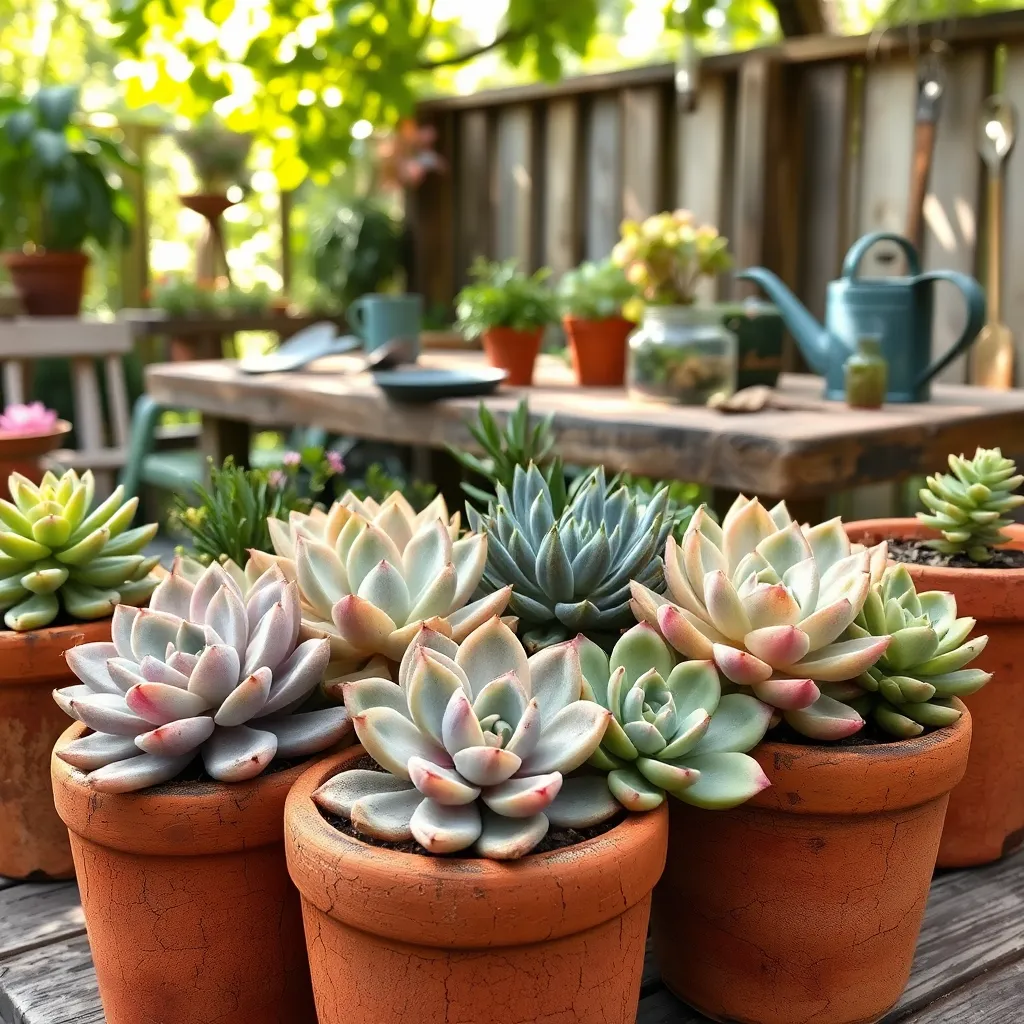
While succulents are resilient plants, understanding their growth cycles is key to ensuring their health. Fertilizing dormant succulents can be counterproductive because they are in a rest phase and do not actively take up nutrients.
During dormancy, these plants conserve energy, and adding fertilizer can lead to nutrient build-up in the soil, which might harm the roots. It’s crucial to recognize the dormancy period of your specific succulents, as it varies between summer and winter growers.
For example, most echeverias and aeoniums enter dormancy in the summer, while jades and kalanchoes become dormant in the winter. To identify dormancy, look for signs like slowed growth and reduced water needs, as these are reliable indicators that it’s time to pause fertilizing.
To maintain healthy succulents, focus on other care aspects during dormancy, such as adjusting your watering schedule. Ensure the soil is well-draining to prevent root rot, which is a common issue when water sits in the pot for too long.
Conclusion: Growing Success with These Plants
In nurturing healthy relationships, just as with succulents, the right care can lead to thriving connections. We’ve explored five key concepts: understanding your partner’s needs, cultivating open communication, providing consistent support, respecting individual growth, and maintaining a balanced give-and-take. Each of these elements acts as a vital nutrient, ensuring your relationship stays resilient and flourishes over time.
As an actionable next step, take a moment today to engage in a heartfelt conversation with your partner, focusing on one of these areas. Whether it’s sharing your needs or expressing appreciation, this simple gesture can strengthen your bond significantly.
Remember to bookmark this article as a valuable resource for ongoing relationship care. Keeping these insights handy will empower you to revisit and reinforce these essential concepts regularly.
Looking ahead, embracing these principles can transform your relationship into a source of joy and mutual support. With commitment and intention, you and your partner can cultivate a love that not only survives but thrives through life’s changing seasons. So, nurture your relationship garden today and watch it bloom with beauty and strength.


